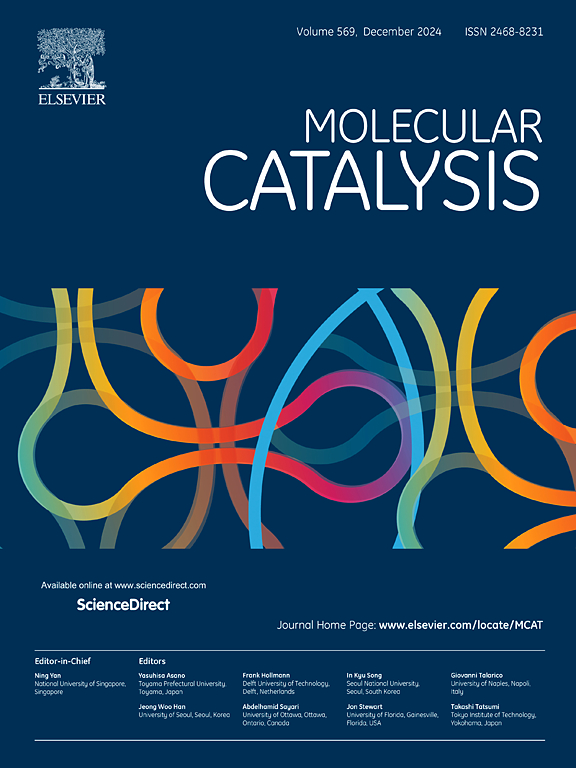Ni-Mn-Al catalysts obtained from layered double hydroxides for CO2 hydrogenation
IF 3.9
2区 化学
Q2 CHEMISTRY, PHYSICAL
引用次数: 0
Abstract
It is widely agreed among researchers that global warming is directly linked to increased concentrations of carbon dioxide (CO2) in the atmosphere. As such, technologies aimed at reducing CO2 emissions have been extensively studied. In this study, bimetallic (Ni-Mn, Ni-Al, Mn-Al) and trimetallic (Ni-Mn-Al) precursors were synthesized by a coprecipitation method to obtain layered double hydroxides (LDH). Preparation of the studied catalysts is easily scalable, due to the relative simplicity and reproducibility of LDH synthesis. The effects of pH and molar proportion of the metals on their physical and chemical properties were evaluated. After calcination and in-situ reduction, the oxides were evaluated as catalysts in the CO2 hydrogenation reaction, which is a possible alternative to the abatement of global warming. It was concluded that Mn increased the specific surface area of the oxides and the content of basic sites in the catalyst, as well as facilitated the onset of the materials reduction. The most active catalyst, obtained at lower pH, had only 6 mol% Mn and showed CO2 conversion and CH4 selectivity equal to 82 % and 100 % at 350 °C, respectively. It was also stable during 16 h on stream, at the temperature of maximum conversion. At low temperatures, this catalyst was one of the best reported in the literature, with CO2 conversion and CH4 selectivity of 40 % and 100 % at 225 °C, respectively. Additionally, 50 % conversion was achieved at 248 °C (T50). At temperatures higher than 400 °C, the reverse water gas shift reaction, which competes with methanation, was inhibited in solids with higher Mn contents (≥ 40 mol%).

求助全文
约1分钟内获得全文
求助全文
来源期刊

Molecular Catalysis
Chemical Engineering-Process Chemistry and Technology
CiteScore
6.90
自引率
10.90%
发文量
700
审稿时长
40 days
期刊介绍:
Molecular Catalysis publishes full papers that are original, rigorous, and scholarly contributions examining the molecular and atomic aspects of catalytic activation and reaction mechanisms. The fields covered are:
Heterogeneous catalysis including immobilized molecular catalysts
Homogeneous catalysis including organocatalysis, organometallic catalysis and biocatalysis
Photo- and electrochemistry
Theoretical aspects of catalysis analyzed by computational methods
 求助内容:
求助内容: 应助结果提醒方式:
应助结果提醒方式:


